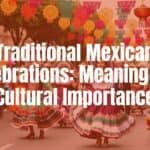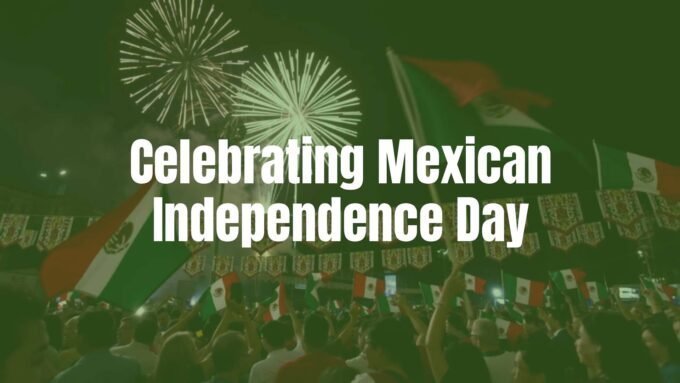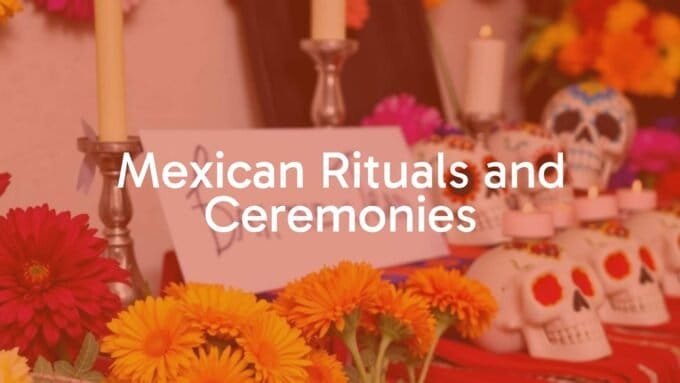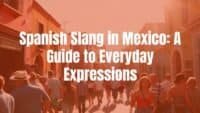Thinking about jumping into Spanish? Mexico is one of the best places to do it. With a long history, rich culture, and more than 130 million friendly people to speak with, you’ll learn far beyond any textbook. It’s safe, fun, welcoming, and often cheaper than Spain or a semester at home. With excellent immersion programs, you’ll be ordering tacos on your own before you know it.
Why Learn Spanish in Mexico?
What Are the Benefits of Studying Spanish in Mexico?
Studying Spanish in Mexico gives you access to a network of over 450 million native speakers. That can open doors in your personal life and career. Mexican language schools offer high-quality teaching at prices that are often much lower than in other Spanish-speaking regions. Your money can go further, letting you study longer or travel more.
Many programs also offer possible academic credit. Adding international study to your resume and building a global network can help your job prospects. Best of all, you use Spanish every day-at the market, with your host family, and at restaurants. This daily practice makes your learning practical and memorable.
How Does Immersion Improve Spanish Language Skills?
Immersion is a fast way to learn. In Mexico, class time is only part of it. Every ride, meal, and chat is a mini-lesson. Constant exposure pushes you to think in Spanish, which speeds up listening and speaking. You’ll learn local phrases, natural rhythm, and accents you won’t find in a book.
At first, being surrounded by Spanish can feel a bit scary, but it soon becomes your best friend. Mistakes turn into progress, and small wins build your confidence. Daily, low-pressure practice in real situations helps your Spanish stick and feel more natural.
Cultural and Social Advantages of Learning Spanish in Mexico
Language and culture go hand in hand, and Mexico offers both in depth. From ancient sites to modern art and music, there’s always something to learn. You’ll hear stories behind Día de los Muertos, mariachi, tequila, and regional dishes.
Mexicans are known for warmth and hospitality. When you try to speak Spanish, people appreciate it and often help. This opens chances to make friends, join local events, and be part of the community. You’ll see life from a new angle and collect memories you’ll keep forever.

How to Prepare for Learning Spanish in Mexico
What Should You Know Before Arriving?
Do some research before you go. Compare several Spanish schools. Each has its own style and focus, so finding a good match matters. Check recent reviews, look at current policies, and ask questions by email or phone.
Learn basic phrases before you arrive. Simple greetings, questions, and key words help during your first days. Many schools accept beginners, but a small base helps you start strong. Also, read about local customs and manners to make your stay smoother.
Travel and Safety Tips for Spanish Learners
Mexico is an amazing place to visit. With smart planning, travel is smooth and safe. Writer Dominique Cordero Monroy, who has explored many Mexican cities, reports feeling safe in the places she recommends. Tourism is important to many communities, so safety matters to locals too.
- Avoid walking alone at night.
- Stay in busy, well-lit areas.
- Carry little cash and keep valuables hidden.
- Skip flashy jewelry and clothes.
- If visiting rough areas, go with a local.
- Keep your wallet and phone secure on public transport.
- Blend in, walk with confidence, and be polite.

Documents and Visa Requirements for Language Study
Handling paperwork is easier with a plan. Before traveling, make sure your passport is valid for at least six months past your stay. Many nationalities, including U.S. and Canadian, don’t need a visa for up to 180 days. For longer study or if you add volunteer work, you may need a student visa.
Check the latest rules for your nationality well before you fly. Your school or program (including groups like Projects Abroad) may offer visa guidance. Keep digital and paper copies of important papers:
- Passport
- Visa (if needed)
- School acceptance letter
- Travel and medical insurance
Best Places to Learn Spanish in Mexico
Mexico City: Urban Energy and Diverse Language Schools
Mexico City (CDMX) is a huge city full of energy and history. About 9 million “chilangos” live here, and many are happy to chat. Neighborhoods like Roma and Condesa feel European, and more than 150 museums-like the Museo de Antropología and MUNAL-offer endless culture.
Markets, plazas, and local spots give you many chances to speak Spanish. Ancient places like the Pyramid of the Sun sit alongside modern life, so each day brings something new. You’ll hear many accents and speaking styles, which prepares you for real conversations.
Top Language Institutes and Local Experiences in Mexico City
You’ll find many strong Spanish schools, from small programs like Walk Spanish Mexico City to larger centers such as the Centro de Enseñanza para Extranjeros. Many schools sit near La Condesa, Polanco, and Centro Histórico.
UNAM, Mexico’s best-known university and a UNESCO site, also offers Spanish classes. Outside class, ride boats on Xochimilco’s canals, sample street food, or relax in lively squares. Art shows, live music, and other events give you constant chances to practice Spanish in everyday settings.
Oaxaca: Culture, Art, and Authentic Mexican Spanish
Oaxaca is colorful and welcoming, and many say it’s one of the best cities to learn Spanish. The colonial center is full of cafes, rooftops, and restaurants. Local crafts shine here: alebrijes (painted wood figures), barro negro (black pottery), and tapetes (wool rugs).
It’s smaller and calmer than Mexico City but packed with culture, including famous Día de los Muertos events. The local Spanish is often clear, which helps learners. The city is walkable-bring good shoes for those cobblestones.

Language Schools and Cultural Activities in Oaxaca
Oaxaca has strong Spanish programs. The Spanish Immersion School is popular with adults. Many schools sit around the cathedral, with shady courtyards that make for a pleasant learning space. After class, try tlayudas or even chapulines if you want to be bold.
On weekends, visit Monte Albán, a major Zapotec site and one of Mesoamerica’s oldest ruins. Other trips include El Tule (with a massive tree) and Hierve el Agua (a stone “waterfall” with great views). Consider tours with Fundación En Vía that support microloans for women in rural towns. And don’t miss mezcal and mole-Oaxacan staples with rich flavor.
Guadalajara: Technology and Tradition
Guadalajara, the capital of Jalisco, blends tradition with tech. It’s Mexico’s tech hub and the birthplace of mariachi and tequila, which makes it both modern and deeply Mexican. Often called the “Pearl of the West,” it has a lively expat scene and plenty of nightlife.
Food options range from tortas ahogadas on the street to upscale dining. Shop at Andares or explore San Juan de Dios market. Guadalajara is home to Chivas, a hugely popular soccer team, and to Latin America’s largest indoor market.
Best Language Programs and Student Life in Guadalajara
Guadalajara has a wide range of schools. The Instituto Cultural Mexicano Norteamericano de Jalisco offers full programs. Projects Abroad also runs its Spanish Language Course here, with one-on-one lessons and the option to add volunteer or internship work.
Student life is busy and fun. The city hosts an International Film Festival and the biggest Spanish book fair. Folkloric dance is common. For weekend trips, head to Tlaquepaque and Tequila for artisan shops, tequila tastings, and live mariachi, or visit Ajijic on Lake Chapala. Puerto Vallarta is also within reach.
Mérida: Yucatán Heritage and Warm Climate
Mérida, capital of Yucatán, offers a calm, cultured setting for learning. Called the “white city,” it charms with festivals, Yucatecan food, and sunny weather. It’s walkable and elegant, with one of the oldest cathedrals in the Americas and a grand boulevard, Paseo de Montejo.
Once made wealthy by henequen, Mérida still feels stylish and refined. It’s great for learners who want depth without big crowds.
Spanish Schools and Mayan Cultural Excursions in Mérida
Mérida has respected schools with years of experience, like Spanish Center Merida and La Casita Spanish School. Many offer learning that reaches beyond the classroom.
The area’s Mayan history offers many trips. Visit Chichén Itzá, a New Seven Wonders site. Go to Celestún to see flamingos or to Valladolid for its pink-toned colonial streets. In the city, stroll the car-free Paseo de Montejo, eat cochinita pibil, and enjoy frequent local festivals.
Guanajuato: Student City with Historic Charm
Guanajuato is a UNESCO-listed gem with a strong student vibe. Home to the University of Guanajuato, it has about 170,000 people and a relaxed, thoughtful feel. Expect hilly lanes, bright buildings, and flower-filled plazas.
Underground tunnels and old silver mines show its past. Cafes, plazas, and student life make conversation practice easy and fun.
Immersive Spanish Programs and Local Attractions in Guanajuato
The Universidad de Guanajuato’s Language School (Escuela de Idiomas) is well known. Many programs add cultural activities to support your learning.
Join a callejoneada-musicians lead groups through narrow streets, singing and telling stories. Visit El Callejón del Beso, where a kiss is said to bring luck. Take the funicular to Mirador Panorámica for sweeping views. Relax in Plaza de San Fernando or visit the Museo de las Momias. Each fall, the Festival Internacional Cervantino brings artists from around the globe.
San Miguel de Allende: Art Scene and International Community
San Miguel de Allende mixes colonial beauty with a thriving art scene. The cobbled streets, high-end shops, and notable architecture draw many visitors, including a large international community. You can practice Spanish while meeting people from many places.
The Parroquia de San Miguel de Arcángel is a striking landmark, especially at night. The city’s many festivals range from Day of the Dead events to the lively Sanmiguelada.
Spanish Classes and Arts Enrichment in San Miguel de Allende
Spanish with Alma, a small, highly rated school, is one strong option. Many schools blend language with creative activities.
Beyond class, visit galleries, studios, and boutiques. Festivals offer plenty of chances to listen and speak Spanish. Talk with locals at cafes and markets, or join events with the expat community. The city’s artistic energy keeps learning fresh and fun.
Puerto Escondido & Playa del Carmen: Learning Spanish by the Beach
If you want beaches with your study time, try Mexico’s coasts. Puerto Escondido on the Oaxacan coast is a relaxed surf town with fewer big resorts and a slower pace-great for studying and enjoying the sea.
Playa del Carmen, on the Yucatán Peninsula, is more mainstream, with a large expat crowd, nightlife, and easy access to Cancún. Both offer sun, sea, and Spanish practice.
Beachside Spanish Schools and Surfing Activities
In Puerto Escondido, some schools mix Spanish and surfing. Oasis Surf, for example, pairs language lessons with time in the waves. You can also help release baby turtles or take a night tour to Manialtepec Lagoon to see bioluminescence.
Playa del Carmen has several well-reviewed schools close to the beach, like the family-run Chichèn Itzà Language School. After class, visit quieter beaches, casual eateries, or nearby cenotes. Hang out at Parque Los Fundadores and try street food. These towns balance study with a tropical break.
Puebla, Querétaro & Cuernavaca: Historic Cities and Language Learning
Mexico’s historic cities also make great study bases. Puebla has 2.5 million people but a calm old center. It’s known for stunning colonial buildings and more than 288 churches within 80 square miles, including El Templo de Santo Domingo with ornate altars and frescoes.
Querétaro’s UNESCO-listed center feels like a museum, with narrow streets, plazas, and colonial homes alongside modern murals. The weather is mild. Cuernavaca, an hour from Mexico City, is called the “City of Eternal Spring” for its flowers and weather. It has long drawn students and offers many accredited schools.
Notable Language Schools and Cultural Experiences
In Puebla, the Spanish Institute of Puebla stands out. It often adds cooking and salsa classes to its program. Visit the Barrio del Artista for art, or shop for crafts at Mercado el Parián. Day trips include the Great Pyramid of Cholula, the town of Atlixco, and Izta-Popo National Park.
In Querétaro, schools like Chantico Spanish School have good reputations. Visit museums in old mansions, see the Acueducto de Santiago de Querétaro, or hike La Peña de Bernal for wide views. Guanajuato and San Miguel de Allende are close by. In Cuernavaca, where the main gazebo was designed by Gustave Eiffel, you’ll find many accredited schools and plenty of locals ready to chat. Mexico City is an easy weekend trip.
Types of Spanish Courses Available in Mexico
Group vs. Private Spanish Classes
When you start learning in Mexico, you’ll likely choose between group and private classes. Group classes are social and active. You practice with classmates, build confidence, and save money. The pace follows the group, which may feel fast or slow depending on your style.
Private classes are made just for you. Your teacher focuses on your needs-basic grammar if you’re new, or field terms (like medical) if you have a goal. This one-on-one time can speed up progress, but the price is higher. Many schools offer a mix: group lessons plus a few private hours each week.
| Class Type | Pros | Cons | Best For |
|---|---|---|---|
| Group | Social, budget-friendly, real conversation practice | Pace set by group, less individual focus | Learners who enjoy teamwork and lower cost |
| Private | Custom lessons, faster progress, flexible focus | Higher cost, fewer classmates to practice with | Specific goals or unique schedule needs |
| Hybrid | Balance of practice and personal attention | Still costs more than group-only | Most learners who want both |

Intensive and Immersion Spanish Programs
Mexico has many strong immersion programs that help you learn fast. Intensive courses often run Monday to Friday with several hours a day. A typical plan might be about 15 hours per week, covering grammar, vocabulary, speaking, and culture. These steady sessions keep you focused.
Immersion adds daily life to class time. Programs like Projects Abroad encourage you to use Spanish while shopping, eating out, and talking with your host family. This constant practice helps you think and speak in Spanish more quickly.
Specialized Courses: Business, Medical, and Conversational Spanish
Many schools offer special tracks for work or personal goals. Business Spanish teaches useful phrases, manners, and styles for office settings, often with role-play and talks about the economy.
Medical Spanish helps healthcare students and workers learn key terms and common patient questions. If you’re doing a medical internship, your teacher can adapt lessons to your field. Conversational Spanish tracks focus on speaking and confidence in daily life. Pick the option that fits your goals.
Online and Hybrid Learning Opportunities in Mexico
Today, you don’t have to start in person. Many schools offer online classes with Mexican teachers, so you can build a base before you travel.
Hybrid plans mix online and in-person. You might begin online to cover basics, then switch to face-to-face classes in Mexico to practice speaking and culture. Some programs also offer online lessons after you leave, so you keep improving from home.
Accommodation and Living Arrangements
Homestays vs. Student Residences
Housing is a big part of your experience. Homestays place you with a local family and offer deep language and cultural practice, often with two or three meals a day. Projects Abroad often groups volunteers in the same home to build community.
Student residences give you more independence and let you live with other international students. You’ll have a built-in social circle, though you may speak less Spanish at home. Choose based on how independent you want to be, your budget, and how much family life you want.
Cost of Living and Day-to-Day Expenses
Compared with many study spots, Mexico is affordable. Prices vary by city-Mexico City costs more than Oaxaca or Puebla-but most places are budget-friendly. Homestays often include meals, which lowers food costs. Public transit is cheap and easy to use.
Groceries, markets, and simple restaurants are well priced. A tasty street meal can be just a few dollars. Many museums and events are low-cost or free. Plan for personal spending, trips, deposits some programs ask for, and travel/medical insurance.
Food Options and Local Cuisine
Mexican food is a big part of daily life. From street stands to sit-down spots, you’ll find a wide range of dishes. In a homestay, you’ll likely enjoy home cooking and learn about local recipes.
Each region has signature flavors. In Oaxaca: rich moles and mezcal. In Mérida: cochinita pibil. In Guadalajara: tortas ahogadas and tequila. In Puebla: markets like el Parián and local dishes. Try tacos al pastor, tamales, pozole-and chapulines if you’re curious. Markets are great for tasting new foods and practicing Spanish with vendors.
Typical Day as a Spanish Student in Mexico
Language Lessons and Classroom Activities
Many days start with breakfast at your homestay, where you can practice small talk. Then it’s off to class. Most programs run Monday to Friday. Full-time plans often total about 15 hours per week, split between morning and afternoon.
Classes are built to improve grammar, vocabulary, listening, and speaking. Expect interactive tasks, role-plays, and short talks on current events or culture. Many schools place you by level and shape lessons to match your skills so you’re pushed, but not overwhelmed.
Cultural Events and City Exploration
Learning continues after class. Schools often plan trips, workshops, and social events. You might take a cooking class, learn salsa, or visit a museum to learn more about Mexico’s history and art.
Explore your city’s streets and plazas, enjoy street art, and visit landmarks. In Mexico City, tour major museums. In Oaxaca, see Monte Albán. In Guadalajara, catch a folkloric dance show. Real-world practice makes your Spanish grow faster.

Free Time, Socializing, and Extracurricular Activities
Evenings and weekends are your time. Go out with classmates, relax, or pick up a hobby. Many programs host social events to help you meet people.
At the beach, surf or swim. Near Puebla, hike volcanic peaks. In San Miguel, enjoy the art scene. In Guanajuato, chat in open-air cafes. These moments help you practice Spanish in a relaxed way and build friendships.
Tips for Getting the Most from Your Spanish Learning Experience
How to Practice Spanish Outside the Classroom
Class gives you the basics, but daily life builds fluency. Talk with your host family during meals. Don’t worry about mistakes-locals are usually patient and glad to help.
Use Spanish at markets and restaurants. Watch Mexican shows, listen to music, and read local signs and news. Try language exchanges with people who want to learn English. Small, steady practice adds up fast.
Safety Guidance for Language Students
Mexico welcomes students and travelers. Groups like Projects Abroad focus on safety and offer round-the-clock support. Stay aware of your surroundings and use common sense, just like in any big city. Avoid dark, empty streets at night and stick to busy areas.
Keep valuables out of sight, hold your bag close, and carry little cash. Go easy on alcohol so you stay alert. Trust your gut-leave if something feels wrong. Listen to your host family and school staff; they know the area well.
Networking and Making Connections in Mexico
Build a circle while you learn. Your school is a great place to meet people with similar goals. Many programs organize social and community events.
Spend time with your host family and their friends. Join local groups for your hobbies, attend festivals and concerts, and consider volunteering. You’ll get more speaking practice and build friendships that last.
Frequently Asked Questions about Learning Spanish in Mexico
Is Mexican Spanish Different from Other Spanish Dialects?
Yes. Like American vs. British English, Mexican Spanish differs from Spain or Argentina in sound and words. These changes won’t block understanding. Many learners find Mexican Spanish clear and friendly to beginners.
For example, “c” (before e or i) and “z” sound like “s” in Mexico, while some parts of Spain use a “th” sound. You’ll also hear local slang and words from Nahuatl. Whatever you learn in Mexico will be widely understood elsewhere.
How Long Does It Take to Become Conversational?
It depends on your starting point, intensity, and how much you practice daily. Immersion speeds things up.
With an intensive plan (about 15+ hours a week) and steady practice, many reach a conversational level in 3 to 6 months. Some manage simple chats in a few weeks. Conversational means you can handle most daily talks-not speak perfectly.
What Level of Spanish Is Required to Start?
You can start from zero. Most schools welcome beginners. They check your level and place you with similar learners so lessons make sense from day one.
If you’ve studied before, you’ll take a placement test and join the right class. Whether you’re new or returning, you’ll find a program that fits.
How Do I Choose the Right City or Program?
Think about what you want from your stay:
- Big city buzz (Mexico City) or calm charm (Oaxaca, Mérida)?
- Beach life (Puerto Escondido, Playa del Carmen) or historic centers (Puebla, Querétaro)?
- Student vibe (Guanajuato) or artsy feel (San Miguel de Allende)?
Compare schools in your target cities. Look at teaching style, class size, course types (group, private, special tracks), and activities. Read recent reviews and contact schools with questions. Set a budget and time frame. If you want to add volunteering or an internship, consider programs like Projects Abroad that offer both study and field experience. Pick the option that fits your goals and learning style.
Mexico: A Gateway to Spanish Fluency and Adventure
Mexico stands out for Spanish study because learning happens everywhere: in class, on the street, and during cultural events. You’ll gain a new language, a deeper view of a rich culture, and friends from around the globe.
Whether you prefer Mexico City’s pace, Oaxaca’s art, Puebla’s history, or Puerto Escondido’s beaches, there’s a place that suits you. Fluency here is more than verbs and rules-it’s personal growth, culture, and real connection. Pack your bags, keep an open mind, and start a language journey you’ll remember.













Leave a comment